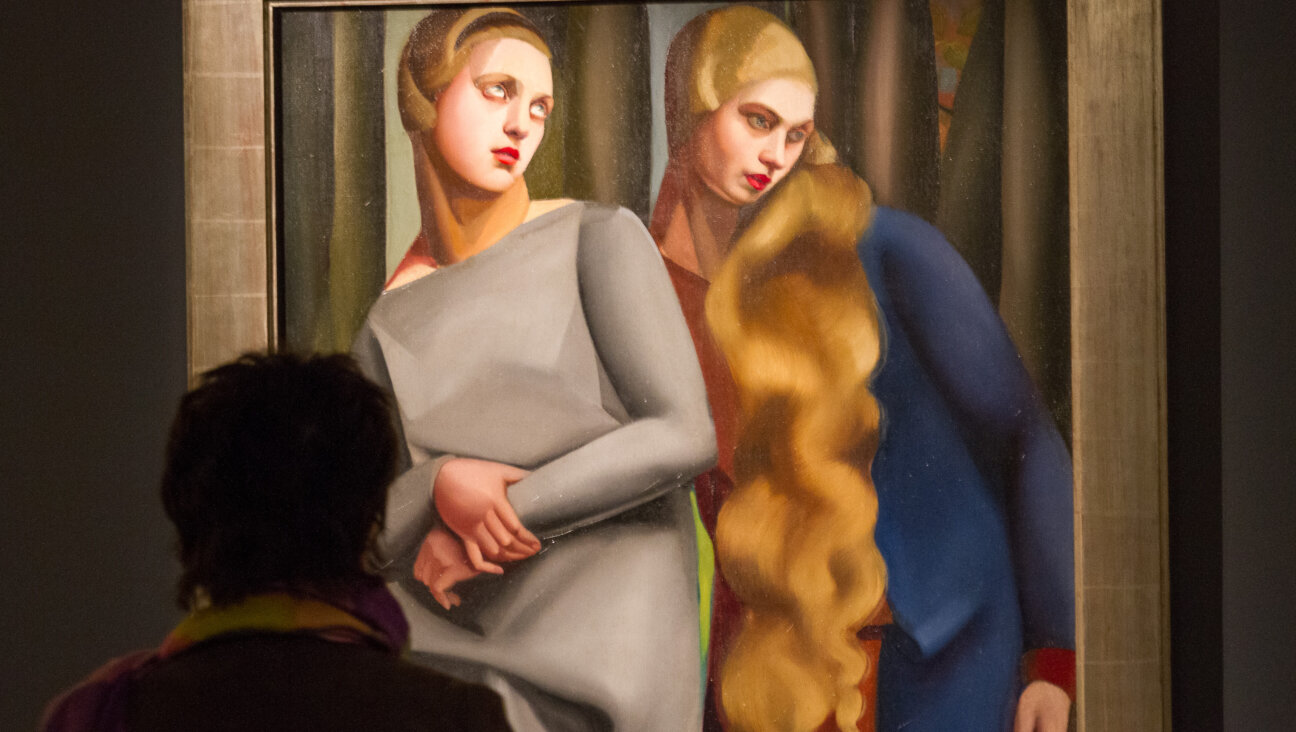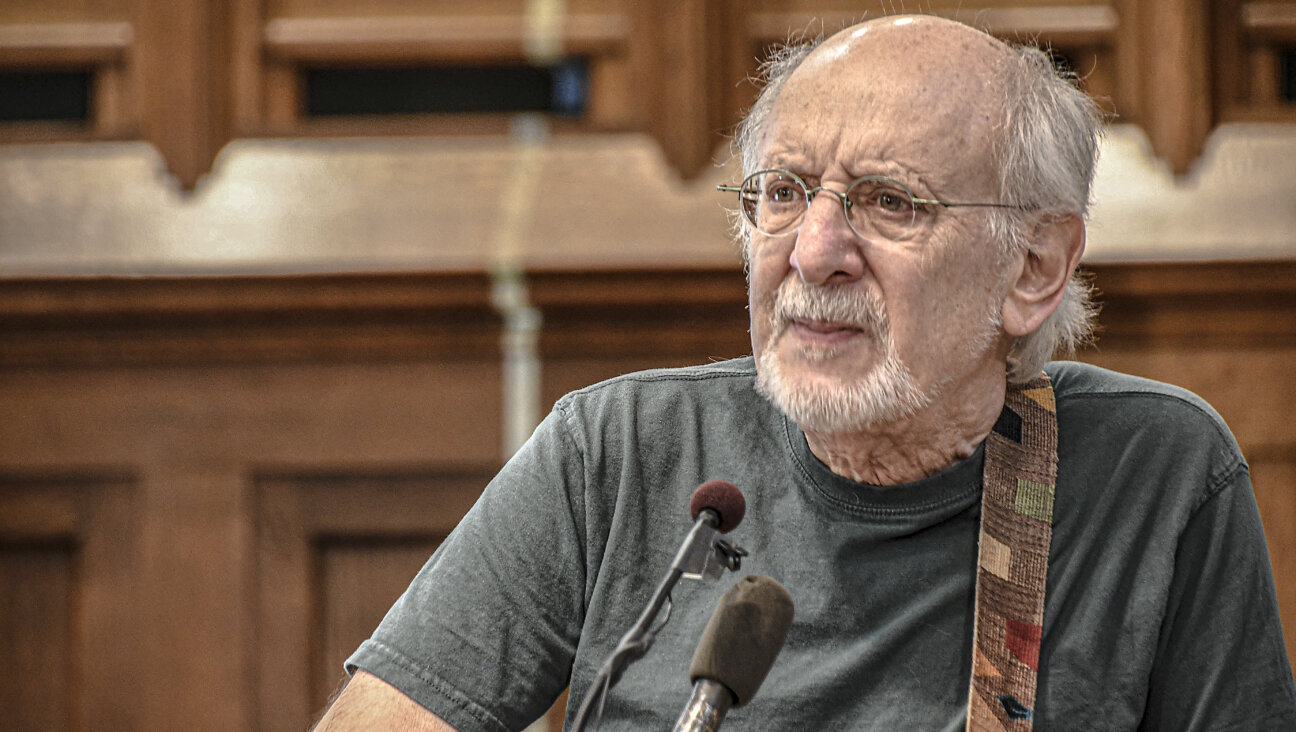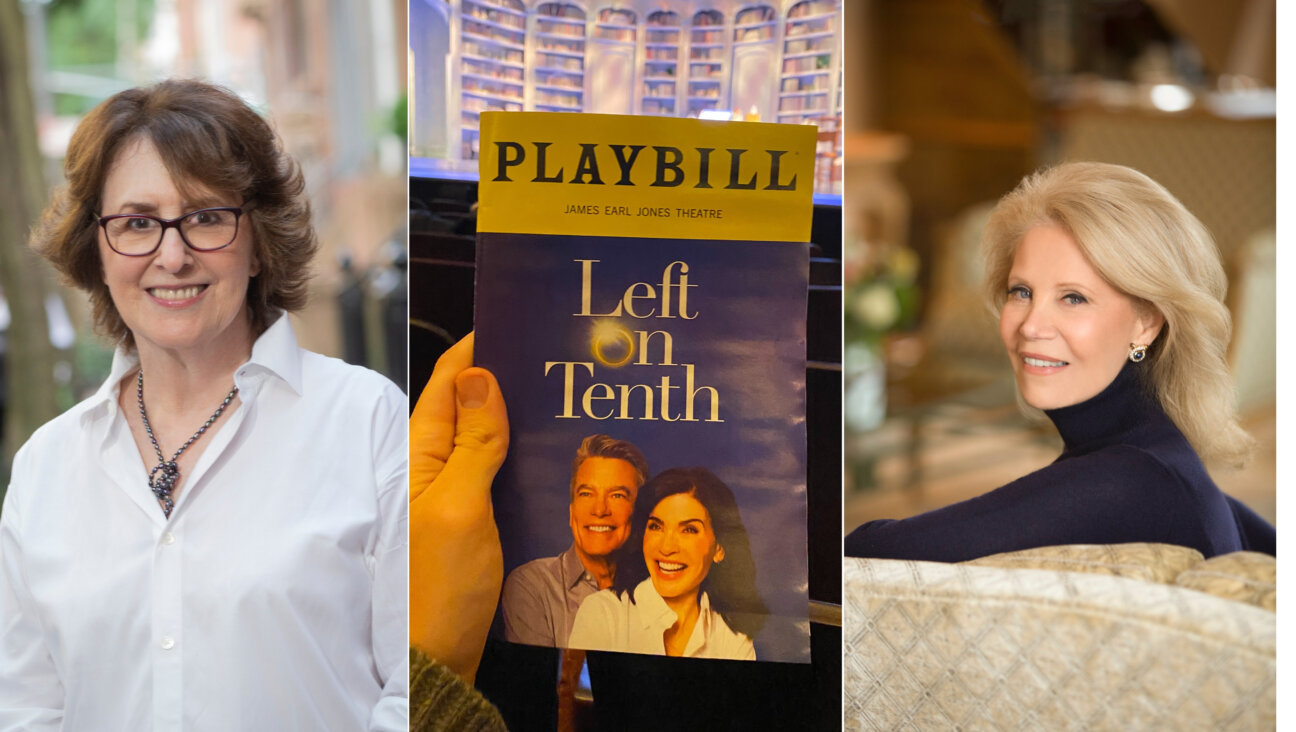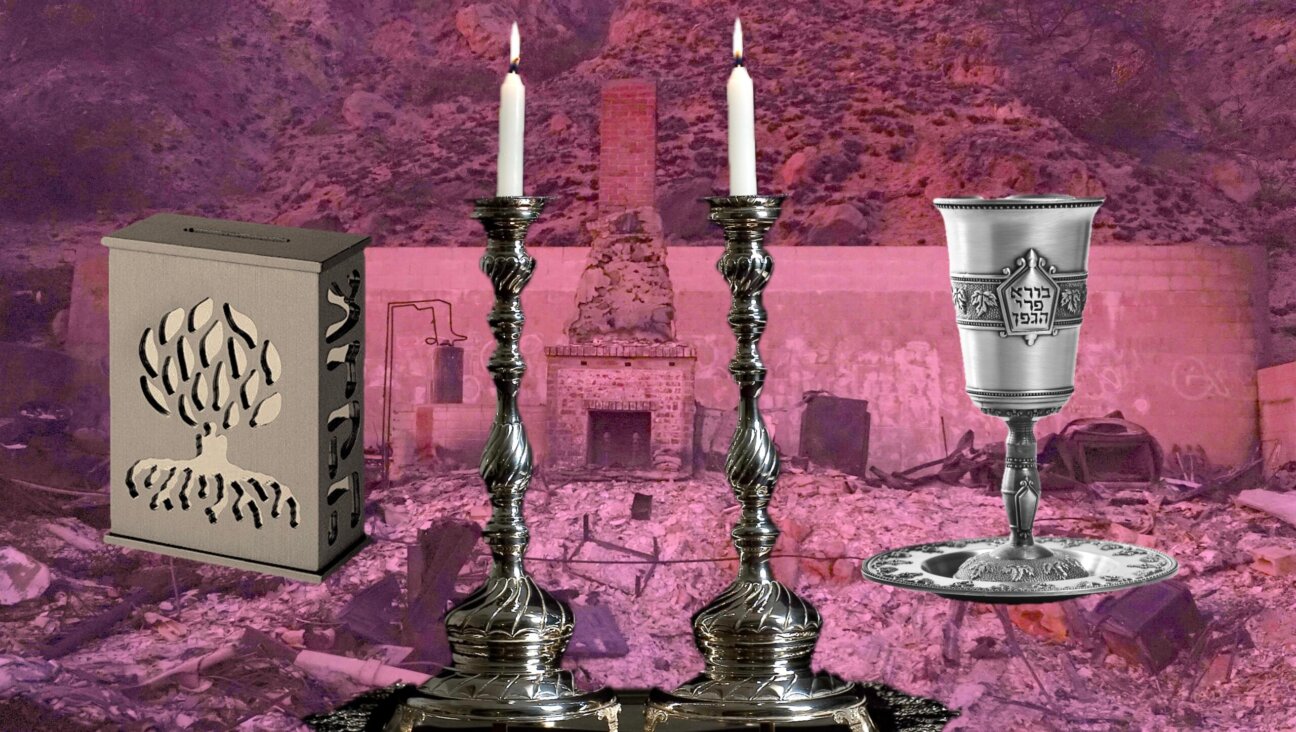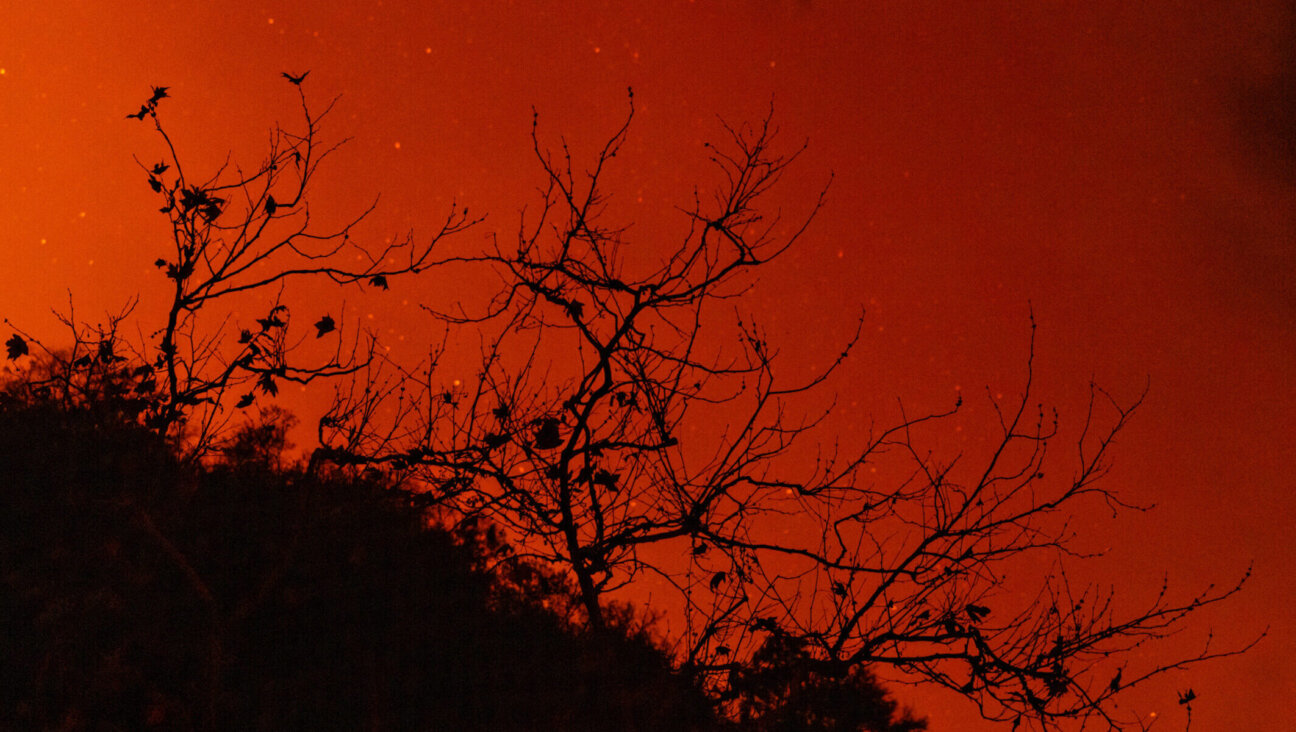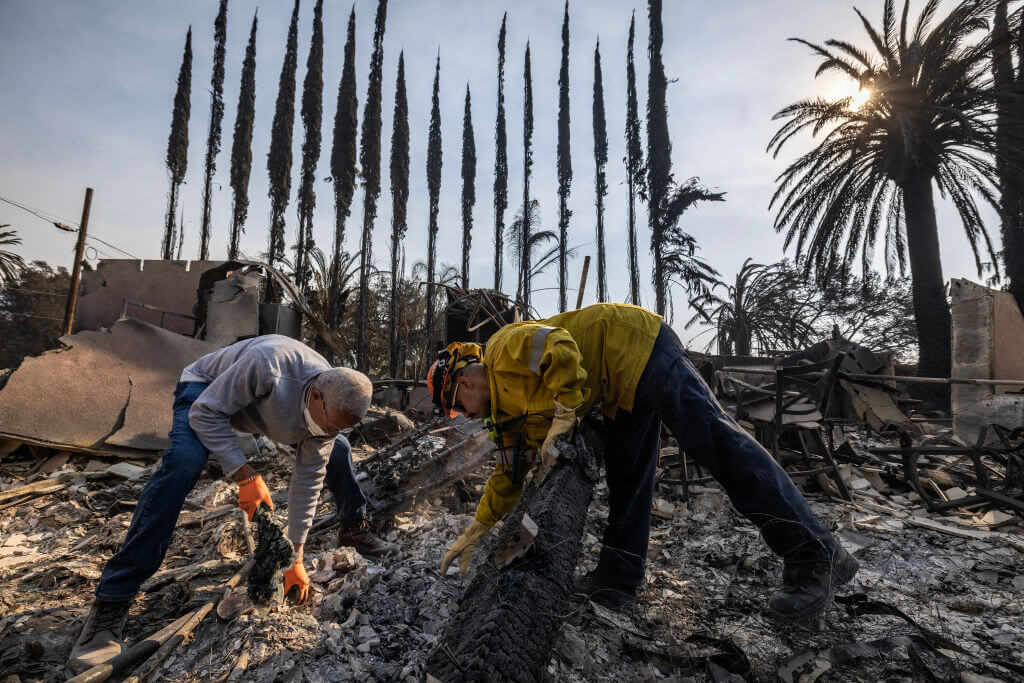I Sing the Body Eclectic

?Longing? (Gil Yefman, 2009)
The LABALMA Body Project, a multimedia art exhibit running at New York’s 14th Street Y until November 17, explores ideas of physicality in a genuine, contemplative and engaging way. While its works occasionally verge on the overly literal, the project as a whole is, thankfully, a far cry from simple navel-gazing.
A collaboration between LABA and ALMA, LABALMA is the product of two groups of artist fellows from each organization who are, across continents, studying a joint curriculum grounded in Jewish texts. Their exhibit gives viewers an opportunity to see provocative works (the more provocative tending to be from the ALMA fellows) in an area that’s close to the bone, literally and metaphorically. The exhibit is a forum for the fellows’ contemplation of the body and its significance in Jewish life and culture.
LABA, an identity laboratory of sorts, aspires to inspire introspection, and examination, of Jewish ideas through art. Similarly, ALMA is an educational institution where Israelis learn about the intersections of Jewish, Hebrew and Israeli cultures, and ways to bring the cultures together creatively and without ideological imprimatur. This means that, for once, artists can talk with some fluency about what they are doing.
In an essay in the exhibit’s catalog, Ruby Namdar writes of his elation in the face of transcendent physical beauty, which, to him, conveys a sense of the immortal. He concedes, two paragraphs later, that he has “never identified Jewish culture with the love of human beauty, let alone with its worship.” He then seamlessly segues into the idea of Jewish texts verbalizing “the intuitive, implacable, resonate response to beauty: ‘It’s divine!’”
Well, sure, in the sense that beauty hints at the presence of a divine Creator, or a divine inspiration. But outside of a pantheistic reading of John Keats, beauty in and of itself is not divinity. Of course, a casual observer of American culture might never know that beauty is not holiness.
The tension between beauty and self has created fertile ground for generations of neuroses, many of them Jewish. Much has been said about the denigration of the ample Jewish woman — the hair, the schnoz, the zaftig flesh. Amelia Morgan’s (LABA) work, “Tracts,” elaborates on this idea by examining the body as a “source of pride and frustration,” with overlapping images of nipples and stitch marks, wounds and healing.
Some of the exhibit’s explorations of the body are more poignant than others, and more overtly Jewish as well. Lisa Deloria Weinblatt’s (LABA) sketch, “Her Body,” on the second floor of the exhibit, is a drawing of a female figure whose back is covered in Hebrew text and imagery, a second layer of a sensually textual skin.
“By creating the juxtaposition of the female body image with sacred text, I seek to overlay the body with a multi-layered map, melding text and human form into one another,” Weinblatt writes in the exhibit’s catalog. And indeed, the woman’s back vaguely resembles the topography of the land of Israel, with a shoulder blade as the Golan sliding down into the Gaza of the left hip. This is territory of beauty rather than controversy, quoting the Song of Songs: “Behold, you are beautiful, my love; behold you are beautiful…your hair is like a flock of goats, sliding down from Mount Gilead.” Weinblatt’s sources render her sketch rich with meaning as well as beauty.
In contrast, Gil Yefman’s (ALMA) “Longing” is a collection of knitted human organs in a rope-like structure dangling from the ceiling, meant to evoke both the legend of Rapunzel and Song of Songs. “Rapunzel, Rapunzel, let down your spleen…it’s like a flock of goats,” is all I could think as I circled the work. I’m not averse in any way to the intermingling of male and female organs, whether physically or, as in Yefman’s work, in knitting, but Yefman contends that knitting, an intimate and usually feminine occupation, is here an act of erotic subversion. I found myself unconvinced by that leap. Rather than Rapunzel and the interior, I found myself closer to the realm of the Emperor’s New Clothes.
Yefman’s work is one of the more avant-garde in the exhibit, which takes advantage of virtually every medium.
Physicality is also explored through sculpture. Masha Haccoun Pozdniakov’s (ALMA) sculpture of a male and female face back to back acknowledges the universal human longing for something unattainable: The work is called, “I looked for him, but I didn’t find him…” The sculpture shows the desperation for fulfillment while posing the possibility of its inherent impossibility. In her catalog notes, Pozdniakov writes that “the two sides — the male and female one — have already lost each other. Nevertheless, however pessimistic it might seem, they are able to meet. Not in this physical world, perhaps. Not with the eyes should they look. In fact, they are much closer to each other than it would seem.”
Pozdniakov also alludes to Aristophanes’s speech in Plato’s Symposium, describing an ancient division of souls, but focuses not on the moment of division, but rather on the search for wholeness.
A more adversarial presentation of the body, on the other hand, is exemplified by Porath Solomon’s (ALMA) photograph, “Veronica.” In the photograph, a man lifts his shirt with a confrontational expression on his face; he assumes the same posture as a man being searched at an Israeli checkpoint for explosives. On this man’s bare stomach, however, is an unexpected visual revelation: the face of Jesus, miraculously emerging from the hair on his belly. The title “Veronica” alludes to the name of the woman said to have wiped Jesus’s face with her veil as he stumbled toward his crucifixion, only to find the image of his face imprinted on the veil after he’d departed.
It is the cumulative effect of all of these works together that lends the exhibit its strength, but LABALMA is at its best in moments of comparative simplicity. A photograph by Mor Arkadir (ALMA) on the second floor of the exhibit takes yet another view of the body. Arkadir’s work depicts a man lying on a hard-looking mattress, his bald head propped up against a wooden bedstead. His legs are crossed over disheveled sheets, crumpled at the bed’s bottom. His plastic sandals are at the ready, on the floor, to be slipped on his feet. But his attention is far from the camera: His hands hold a book before him, and he is focused on its pages. The photograph’s beauty stems from its implicit recognition that the body is but a carrying case for something greater and deeper. The man’s body may be on the bed, Arkadir seems to say, but his mind, soul and self are immersed in a world to which we, the observer, have no access through a mere photographer’s lens.
For $10 the exhibit’s catalog, written in Hebrew and English, is a must-have. In it the artists explain their respective approaches in a way that the exhibit’s format constrains. Without the catalog, the exhibit can seem — forgive the pun — disjointed.
Perhaps it’s not such a surprise that the exhibit’s strength comes from its accompanying text rather than its corpus. For all the exhibit’s theme, we are still, after all, a people of the book.
Jordana Horn is a lawyer and writer at work on her first novel.
A message from our Publisher & CEO Rachel Fishman Feddersen

I hope you appreciated this article. Before you go, I’d like to ask you to please support the Forward’s award-winning, nonprofit journalism so that we can be prepared for whatever news 2025 brings.
At a time when other newsrooms are closing or cutting back, the Forward has removed its paywall and invested additional resources to report on the ground from Israel and around the U.S. on the impact of the war, rising antisemitism and polarized discourse.
Readers like you make it all possible. Support our work by becoming a Forward Member and connect with our journalism and your community.
— Rachel Fishman Feddersen, Publisher and CEO








